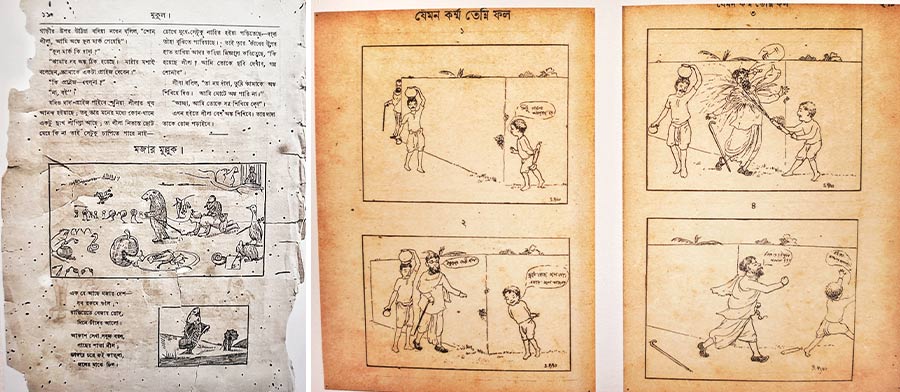
Benign Beginnings: ‘Jemon Kormo Temon Phol’ in Sandesh and ‘Mojar Muluk’ in Muluk were among the earliest Bengali comics. Comics created by Sukholata Rao published in ‘Sandesh’ around 1921 are considered to be the first of the genre in Bengali. Before this, ‘Mukul’ — a celebrated children’s magazine — had published a series of pictures accompanied by text and vice-versa in the last decade of the nineteenth century. The poem ‘Mojar Desh’ by Jogindranath Sarkar was named ‘Mojar Muluk’ and published in this format in ‘Mukul’ in 1898
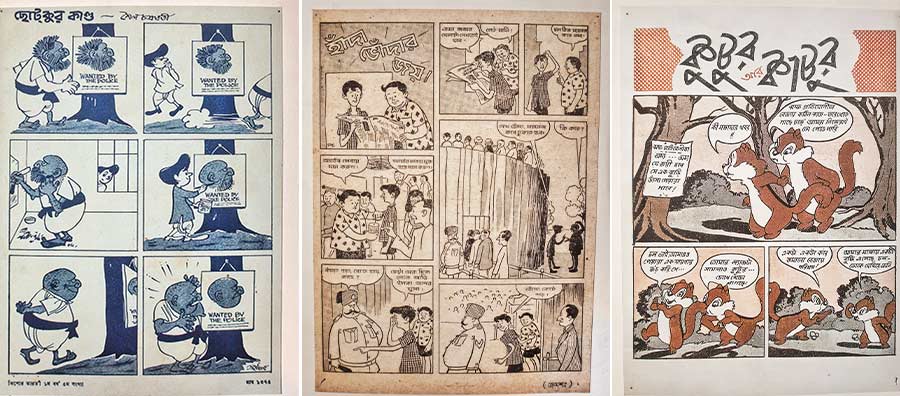
Gags, Giggle, Guffaw and Glee: ‘Handa Bhonda’ comics by Narayan Debnath were first published in Shuktara in 1962; ‘Kutur o Katur’ by Pratul Bandopadhyay published in Sharodiya Dev Sahitya Kutir in 1961 and ‘Chhotkur Kando’ by Saila Chakraborty published in Sharodiya Kishore Bharati in 1966. Many of the Bengali comics evoke unadulterated laughter. Narayan Debnath started creating characters like Handa Bhonda, Batul the Great, Nonte Phonte, Shukti Mutki, Bahadur Beral and others. Saila Chakraborty, Prafulla Lahiri and later Subir Roy also left a mark in this genre

Expeditions, Escapades and Excitement: ‘Shikaar’ by Mayukh Chowdhury published in Kishore Bharati in 1971 and ‘Khape Dhaka Torobar’ by the same author published in Nabakallol in 1964. This genre dealt with things unknown — such as terrestrial or galactic — always great ingredients for comic capers. Narayan Debnath, Mayukh Chowdhury, Tushar Chatterjee and others churned out exciting adventures and narratives one after the other

Murder, Mayhem and Menace: ‘Sarparajyer Dwipe’ by Narayan Debnath and ‘Nishit Raater Ahoban’ by Mayukh Chatterjee. Narayan Debnath, the master of this genre, created a distinctive visual language with his figures, expertly executed scenarios and breathtaking action. His style and format became a template for others like Mayukh Chowdhury. Artist Subrata Gangopadhyay also created comics in this genre. The trend continues with young artists adopting the time-tested formula with varying degrees of success

Fictionalising History, Historicising Fiction: ‘Desher Mukti Sangrame-e Majnu Fakir’ by Surjo Roy was published in Kishore Bharati in 1975 and ‘Hul’ written by Tridib Chattopadhyay and illustrated by Subrata Gangopadhyay was published in Kishore Bharati in 1980. Action-packed stories set in a historical backdrop created a distinctive genre. ‘Puber Aakash Laal’ by Saila Chakraborty has the Bangladesh Liberation War as its backdrop, while ‘Hul’ by Subrata Gangopadhyay and Tridib Chattopadhyay is based on the Santhal revolt (1855-56)
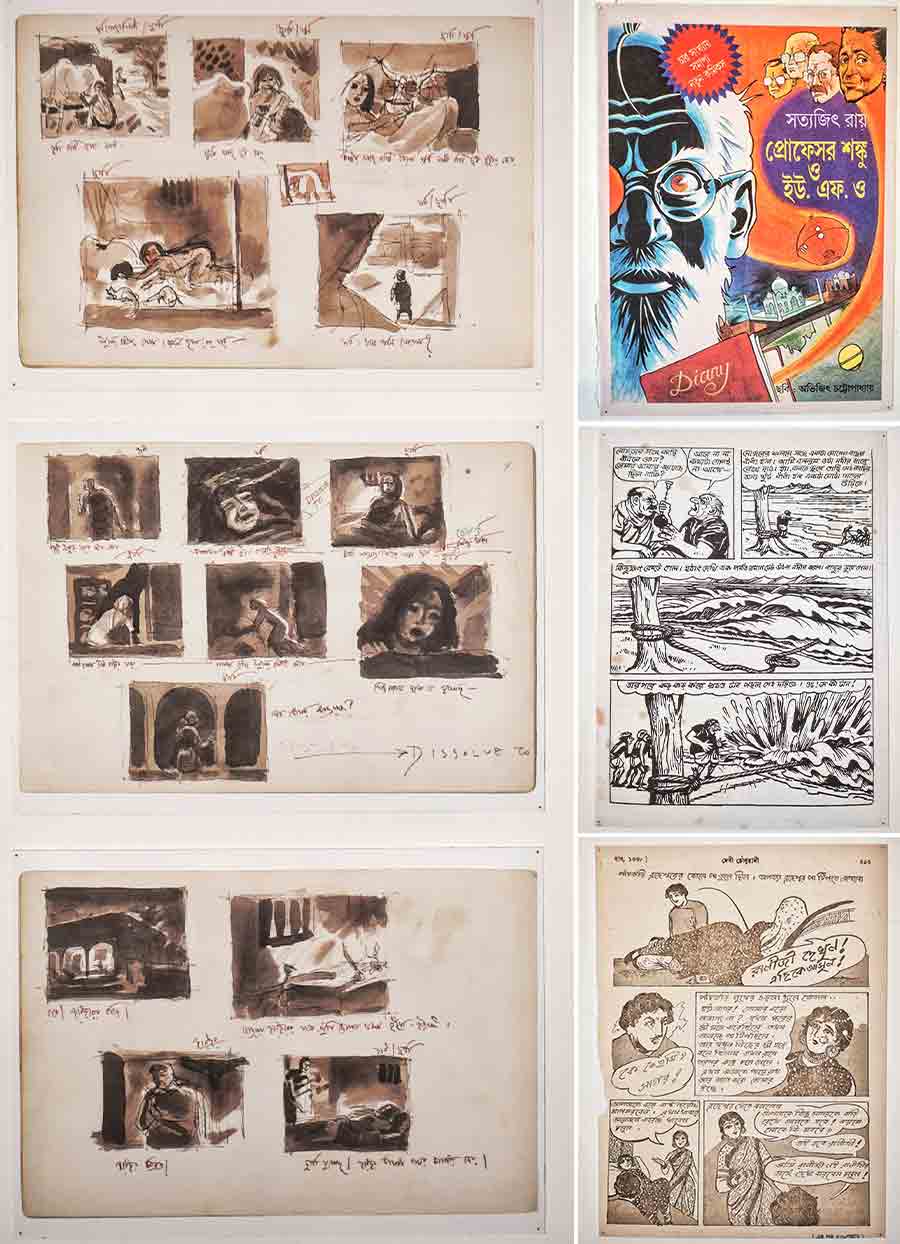
Adept at Adaptation: Graphic adaptation of literary works is a time-tested method adopted by comics artists. Bengali comics are no exception. From Bankimchandra Chattopadhyay and Troilakyanath Mukhopadhyay to Saradindu Bandopadhyay and Satyajit Ray, the list of authors whose works have inspired comics is endless
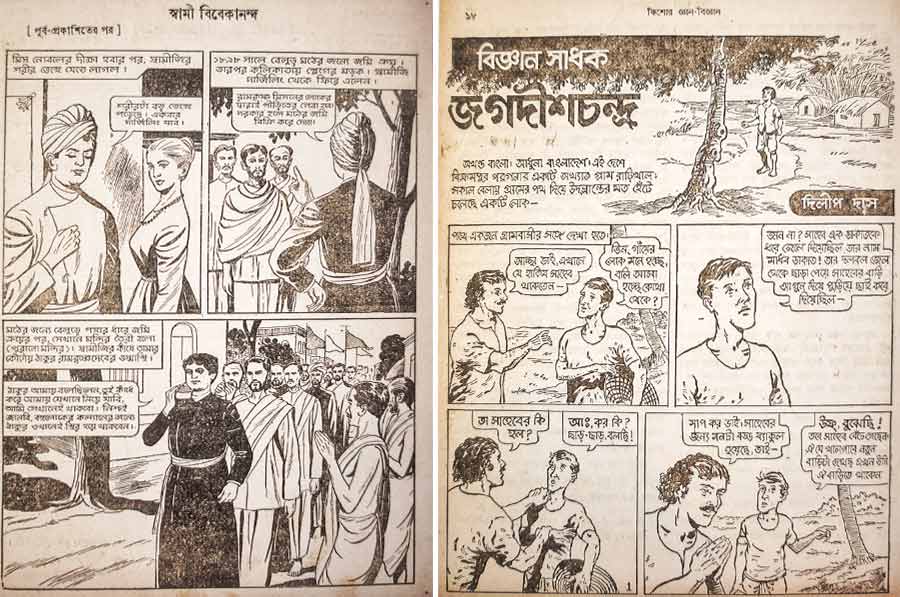
Heroes and Hero Worship: This genre was started by Narayan Debnath with ‘Robi-Chobi’ (Rabindranath in comics) and later turned into an industry by Amar Chitra Katha. Later, artists like Mayukh Chowdhury, Dilip Das and PC Lahiri created comics on the life and times of icons like Swami Vivekananda, Mahatma Gandhi, Ishwar Chandra Vidyasagar and Jagadish Chandra Basu and others
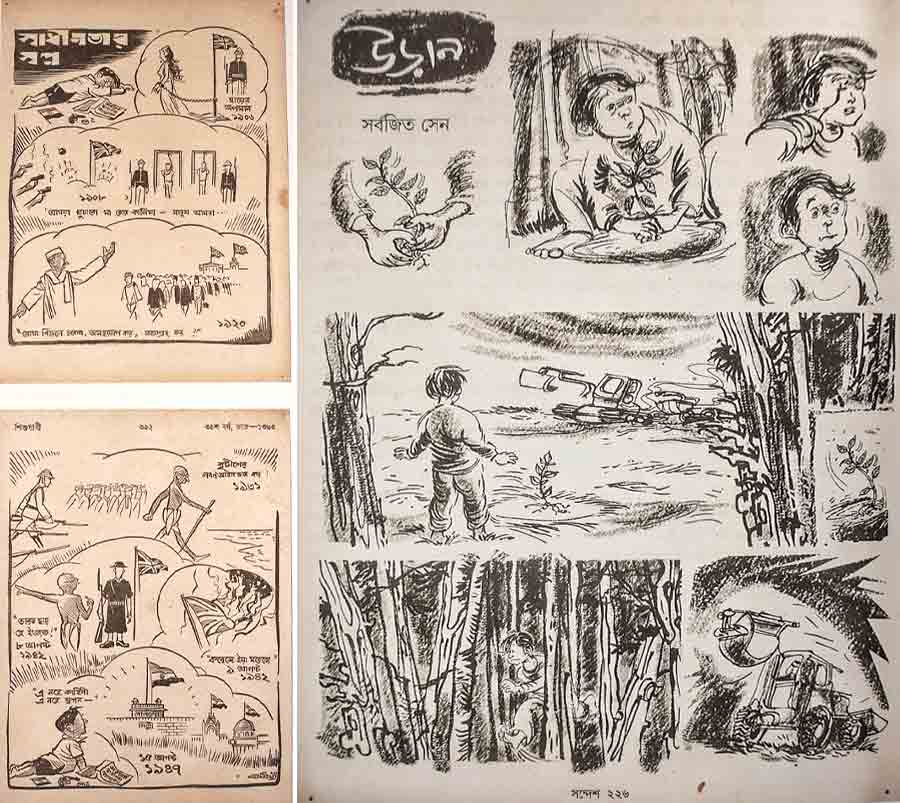
Examine, Experiment and Exhale: Bengali comics have rarely ventured into territories that challenge conventional perceptions of middle-class Bengali households. Topics such as sexuality have generally been excluded in the youthful world of Bengali comics. Artists like Kafi khan, with his brilliant social satire, epitomise the experimentation that could have taken Bengali comics to new heights. Artists like Sarbajit Sen, Sankha Banerjee and Sambaran Das have ventured to confront and experiment with topics that have rarely been ventured into and create a separate genre in Bengali comics








